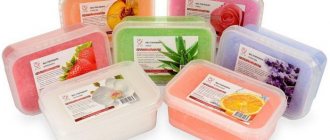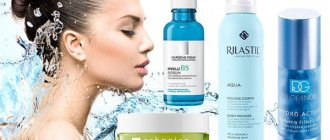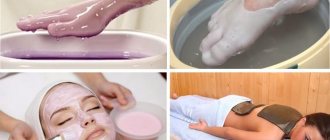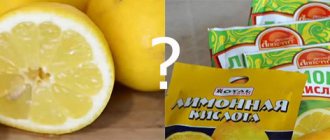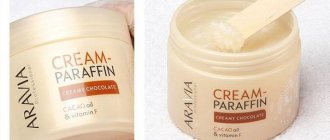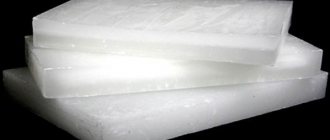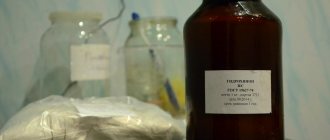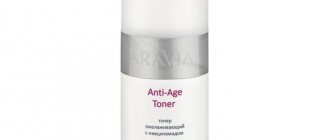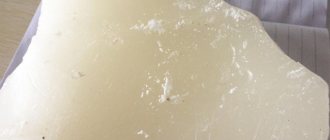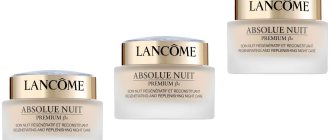Paraffin has been successfully used for medical and cosmetic purposes for a long time. In physiotherapy, it is used as part of the complex treatment of diseases of the musculoskeletal and nervous systems, and dermatological pathologies. The cleansing and rejuvenating properties of paraffin are in demand in cosmetology. It is used for procedures on the skin of the hands, face and other parts of the body.
Modern manufacturers produce various types of cosmetic paraffin - both regular and with various additives. It is suitable for procedures in salons and for home use.
Composition of cosmetic paraffin
The starting material for the production of this substance is oil. Paraffins of varying degrees of purification are made from it, which are used both in industry and in the domestic sphere. For example, candles are made from them.
In cosmetology, only highly purified paraffin with a melting point of about 53 degrees is used. It does not contain impurities that can harm the skin. Additional ingredients may be added to improve characteristics, such as vitamins, essential oils, plant extracts, etc. Some manufacturers also use safe dyes. Purified cosmetic paraffin does not cause allergic reactions, so it is suitable for different skin types. It is better to choose formulations with additives on the recommendation of a specialist who can advise the most effective means taking into account individual characteristics.
conclusions
- Paraffin is not allergenic or toxic.
- For cosmetics, only purified paraffin/mineral oil that meets pharmaceutical safety requirements may be used.
- European or Canadian health authorities see no health risks from the use of paraffin in cosmetics or even food.
- Current knowledge does not consider it likely that mineral oils from cosmetics will penetrate the skin.
- Tests have shown that it is possible carcinogenic aromatic hydrocarbons (MOAH) and saturated hydrocarbons (MOSH) may be contained in cosmetics, but European authorities believe there is no risk as long as the recommended acceptable daily intake is not exceeded.
- Due to data gaps, the risk of long-term exposure to MOAH from lip care is unclear.
- Paraffin is NOT approved by eco-certifiers. If you want to avoid using mineral oil in cosmetics, check the ingredient list and use natural cosmetics.
- Avoid food additive E 905 - it is a mineral oil.
Types of cosmetic paraffin
Manufacturers offer a huge range of products designed for different skin types. Cosmetic paraffins with additives are very popular. The following additional ingredients are often used.
- Peach oil. This natural component effectively nourishes the skin and also has an anti-inflammatory effect.
- Vitamin E. Gives the composition an additional nourishing and rejuvenating effect, improves skin tone.
- Tea rose extract. Increases skin elasticity and gives it a natural healthy tone. This ingredient is also added to improve the scent of cosmetic paraffin. The aroma of roses has a calming effect and improves your mood.
- Cacao butter. Accelerates regeneration processes and skin renewal.
- Extracts of lemon, orange and other citrus fruits. They have a stimulating effect and effectively nourish the skin. In addition, citrus components add a subtle aroma.
Cosmetic paraffin is sold in different types of packaging. Most often it is packaged in plastic bags and trays. Paraffin is also available in the form of a cream - thanks to its soft texture, it can be applied without additional heating. This option is suitable for home use, because the procedure does not require any additional tools.
Liquid paraffin in cosmetics is harmful
In recent years, liquid paraffin has come under fire and has been called dangerous for the skin. To determine whether liquid paraffin is safe for the skin, let's discuss a few criticisms of liquid paraffin.
Moisture
One criticism of liquid paraffin is that it doesn't actually moisturize the skin. It's certainly important to strengthen the skin's natural moisture barrier, but many skin care experts suggest that the moisture sensation created by liquid paraffin is unrealistic.
After someone uses a product containing liquid paraffin, the skin will experience the soft, silky feeling of mineral oil on the surface rather than the actual texture of the skin. Therefore, some argue that the moisturizing effect of liquid paraffin is simply a sensory illusion. While liquid paraffin certainly makes the skin feel soft, the barrier it forms on the skin's surface helps retain moisture. However, it does not improve moisture content directly and will only do so while on the skin, providing short-term benefits for some skin types.
Carcinogenicity
There is a connection between liquid paraffin and oil. Many believe that the cleaning process contaminates liquid paraffin with 1,4-dioxane, which has been listed as a probable carcinogen by the World Health Organization and the Environmental Protection Agency. However, as determined by the US Food and Drug Administration
and
the International Pharmacopoeia
, liquid paraffin must undergo numerous tests before it can be included in cosmetics and skin care products.
There is a connection between liquid paraffin and petroleum.
It must be 99% pure and completely free of chemical contaminants, bacteria and traces of heavy metals. Additionally, according to the EWG Skin Deep Cosmetic Database, paraffin is rated 1, which is the safest rating an ingredient can receive.
Acne
The final criticism of liquid paraffin is that it can clog pores and promote the development of pimples and pimples. Unfortunately, research on this topic is still inconclusive. Liquid paraffin and mineral oil can aggravate acne problems. However, most people will not experience any problems.
We recommend reading: Depilflax paraffin
In fact, in a study published in the Journal of Cosmetic Dermatology
, cosmetic-grade mineral oil has been proven to be non-comedogenic, meaning it won't clog pores, which can lead to blackheads and pimples. If you have a history of severe acne, you may want to avoid skin care products with liquid paraffin as a precaution.
How does cosmetic paraffin work?
The peculiarity of this substance is its very slow cooling and long-term heat retention. At the same time, cosmetic paraffin has a low melting point, so it turns into liquid form before it gets too hot. When applied to the skin, this mask has a moderate warming effect and does not cause discomfort.
The paraffin layer does not allow air to pass through, so underneath it a kind of sauna effect is obtained. The heat increases sweating, which helps flush out toxins and other impurities from the skin. Then the paraffin mask (and with it the surface of the body) gradually cools down, the pores narrow. As a result, the remaining moisture is absorbed back, and large molecules of harmful substances remain outside. In this case, fluid is redistributed because water is absorbed into the dry areas of the skin that most need hydration.
Why is liquid paraffin used in cosmetics? Benefits
Finding liquid paraffin listed in a cream or lotion can be confusing for some consumers. After all, paraffin is a term commonly associated with candles that actually have nothing to do with skin care. But if you look at some of your personal care products, you can find liquid paraffin in creams, lotions, lip balms, soaps, and even eczema ointments. But what does liquid paraffin do and, more importantly, is it safe to apply to your skin?
When it comes to skin care, liquid paraffin can be used for a variety of conditions such as dry skin, itching, and eczema.
Dry skin
Liquid paraffin can be classified as an occlusive emollient. Occlusive ingredients work by forming a film on the skin that acts as a water-resistant barrier. The film also helps prevent the skin's natural moisture from evaporating. Over time, this increases the skin's hydration, causing water to accumulate in the topmost layer of the skin. Emollients such as liquid paraffin can be beneficial for all skin types, but emollients are especially beneficial for those with dry, rough and/or flaky skin. Emollients can relieve these symptoms by leaving the skin soft and smooth.
Irritation
In addition to moisturizing the skin, liquid paraffin can help with itching because the occlusive film it forms on the surface of the skin protects against environmental irritants such as allergens, pollutants and bacteria.
Eczema
Eczema or dermatitis is a term for a group of skin conditions characterized by a dry, itchy rash. Eczema can be a debilitating condition due to the intense itching associated with the rash. Because liquid paraffin locks in moisture and helps prevent itchy skin, this ingredient is also often added to eczema creams. By strengthening the natural moisture barrier, liquid paraffin can reduce the symptoms of this skin condition.
Eczema creams often include liquid paraffin
Skin lightening
Another suggested use of liquid paraffin is skin lightening. However, this is simply not true. Liquid paraffin is an emollient that keeps skin soft and smooth. Liquid paraffin cannot be used to lighten skin.
Benefits of paraffin therapy
The mask can be applied to any part of the body. Most often this procedure is performed on the face, arms, legs, back and abdomen. Paraffin therapy sessions have several important advantages.
- Comfort. One session lasts about half an hour, during which you can relax and unwind. Many paraffin masks contain natural extracts that give them a pleasant scent.
- Quick effect. Paraffin therapy works immediately - changes will be noticeable after the first procedure. The skin becomes softer and more hydrated, its tone increases. Carrying out a course of several sessions allows you to achieve an even more pronounced effect.
- Massage effect. When the layer of cosmetic paraffin cools, the mask tightens a little and compresses the skin. It feels like a nice light massage. In addition, this way you can fight small wrinkles.
- Metabolism stimulation. Paraffin therapy affects the sebaceous and sweat glands and accelerates regeneration processes. The complex stimulating effect improves the appearance and general condition of the skin, making it more elastic.
- Fight against age-related changes. The procedure visually tightens the oval of the face and corrects fine wrinkles.
How to use cosmetic paraffin
Before starting the procedure, it is necessary to properly prepare the skin. The face is cleansed with gel or other cleanser. Hands and feet can be treated with a scrub.
The next stage is the preparation of cosmetic paraffin. It must be melted before use. A fragment of the required weight (the weight depends on the area of the processing zone) is heated in a special container or in a water bath until it acquires the desired consistency.
Before applying paraffin, be sure to check that it is not too hot. To do this, apply a drop on the inside of your forearm. If the temperature is comfortable, you can begin the procedure.
You can apply the mask to your face with a brush or cotton pad. It is recommended to start from the chin and gradually move towards the forehead. To obtain a pronounced cosmetic effect, paraffin is laid in several layers - its total thickness should be at least 5 mm. The hands and feet are immersed in the bath several times with a break of several seconds. This procedure is performed until a dense layer of paraffin is formed. In order for the mask to cool more slowly, it is additionally wrapped - for this you can use polyethylene or cling film. After 20–40 minutes, you can remove the paraffin and treat the skin with cream.
Application and beneficial properties
Every cosmetic product needs an oil base. But the manufacturer can use natural ingredients or their synthetic analogues, such as liquid paraffin.
The advantages of artificial oils are obvious:
- The shelf life of natural products is usually short - 3-6 months. Synthetic-based cosmetics can be stored much longer - 1-2 years.
- Quality herbal ingredients are quite expensive. Synthetic oils significantly reduce the cost of products and make them more in demand.
- Natural ingredients do not always mix well with water. Liquid paraffin, on the contrary, interacts well with moisture, maintaining a homogeneous cream structure.
In cosmetics it is most often used as a universal remedy, namely:
- moisturizing;
- skin softening component;
- good antistatic;
- solvent.
Experts note the beneficial effects of liquid paraffin:
- prevents moisture loss in the skin;
- stimulates blood circulation;
- cleanses and briefly expands skin pores, promoting better absorption of cosmetic cream;
- relieves swelling;
- stimulates the smoothing of wrinkles, creating a lifting effect;
- softens sebaceous plugs and relieves acne;
- minimizes swelling and swelling;
- tones the skin.
